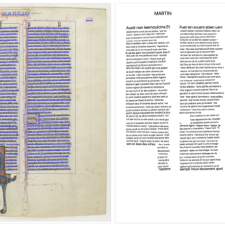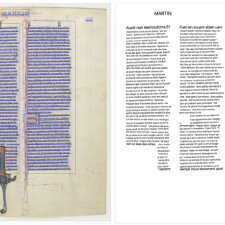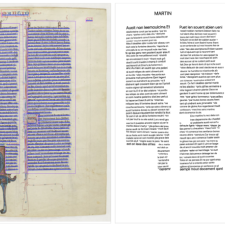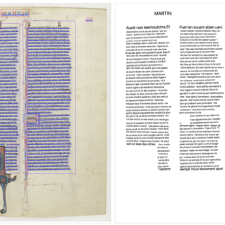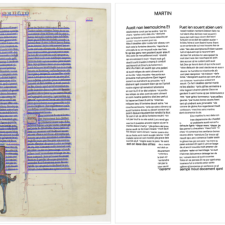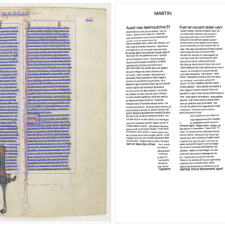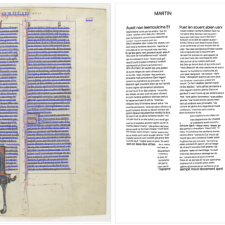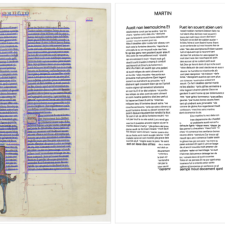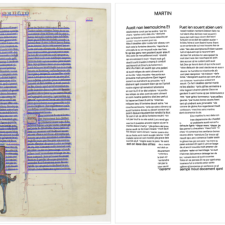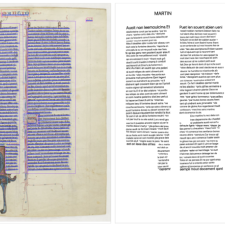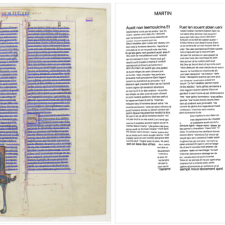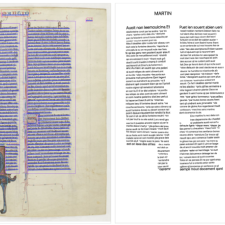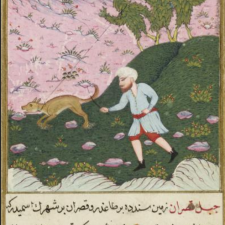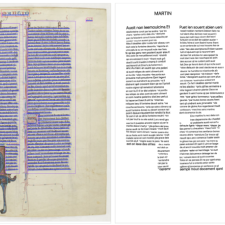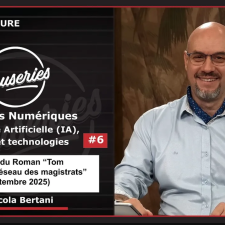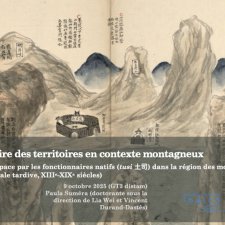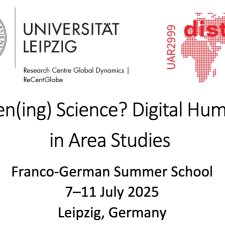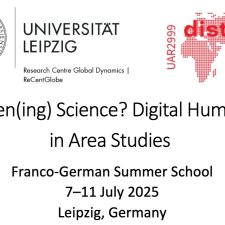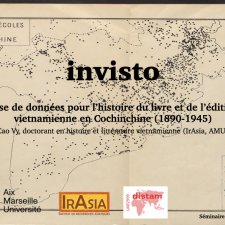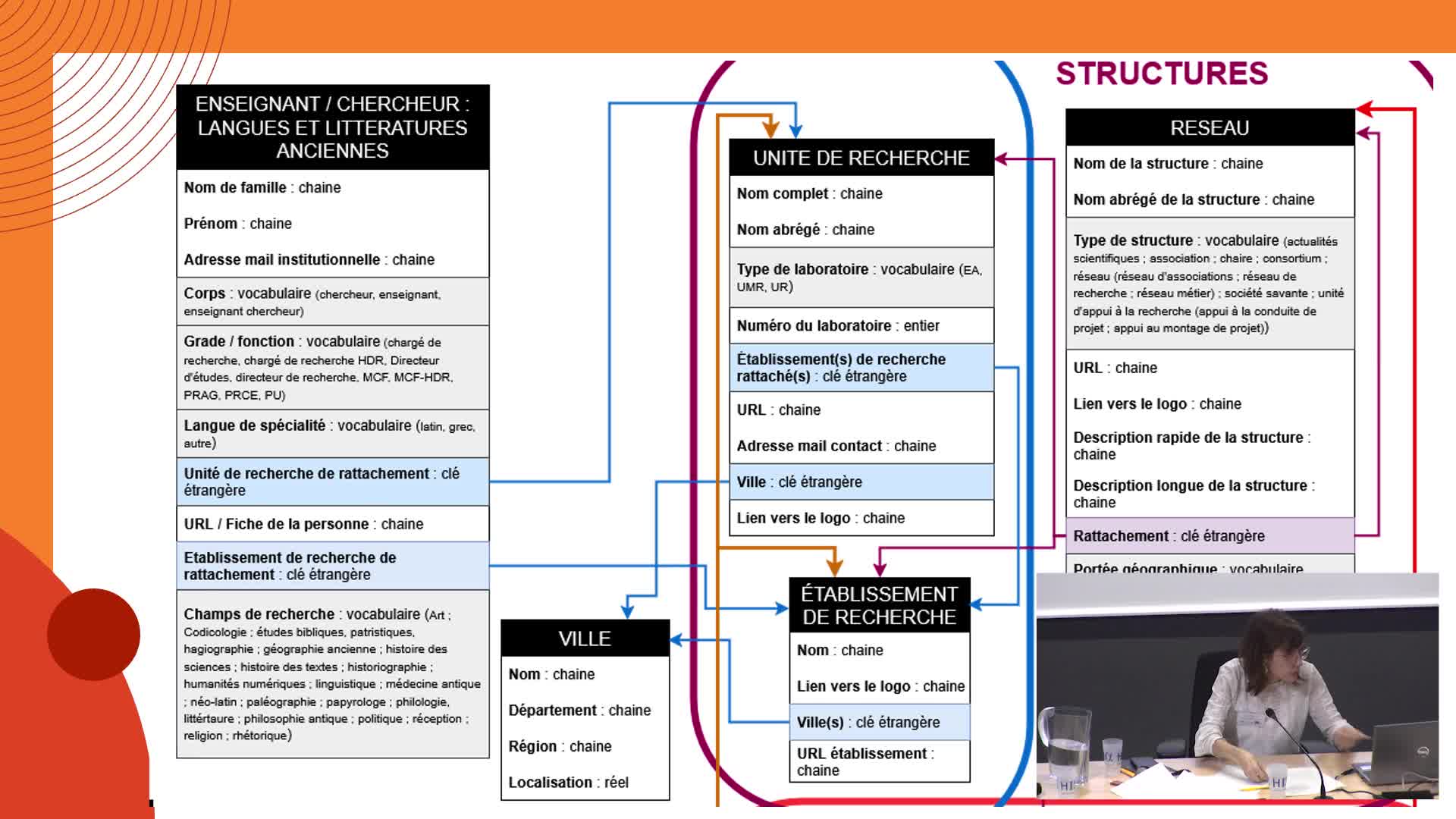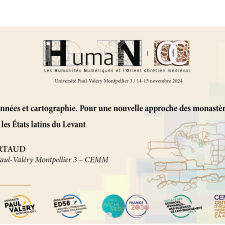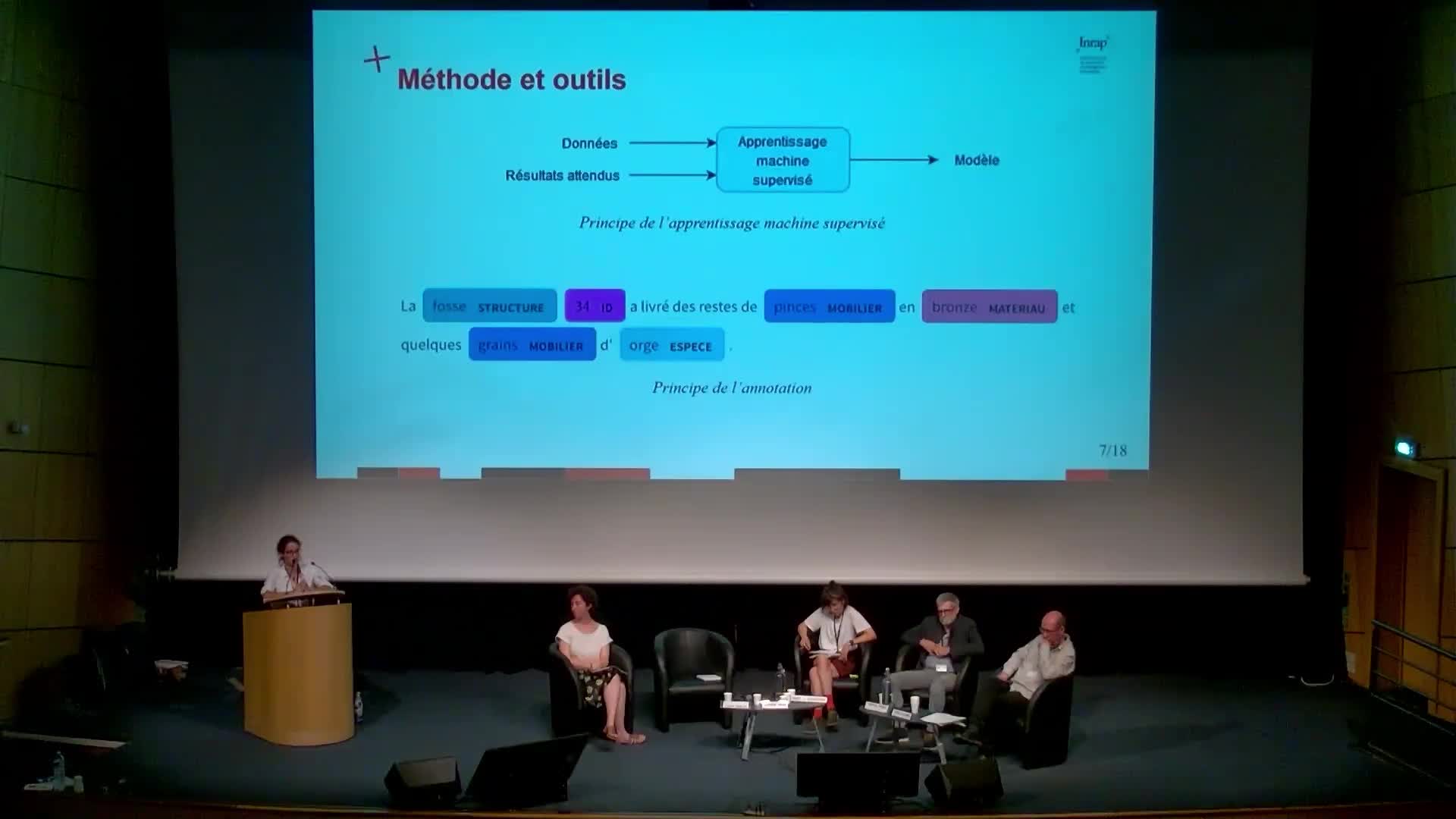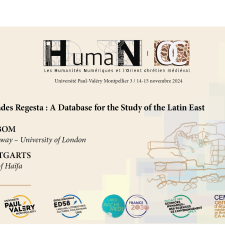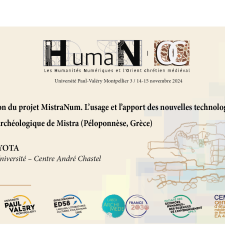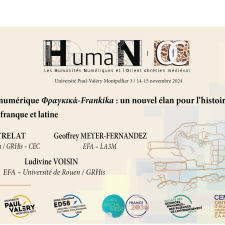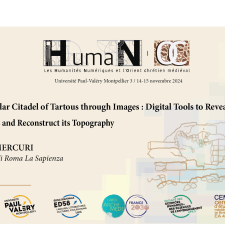Notice
2.1 : FoNDUE - A Lightweight HTR Infrastructure for Geneva
- document 1 document 2 document 3
- niveau 1 niveau 2 niveau 3
Descriptif
par Simon Gabay (université de Genève), Pierre Kuenzli (université de Genève) et Jean-Luc Falcone (université de Genève)
Recognising text on an image is becoming increasingly important for scholars working with textual sources. Because institutions have to address the needs of their members, the University of Geneva has decided to offer a free of charge and user-friendly solution based on eScriptorium. The specificity of our instance is that it relies only on local infrastructures to minimise its cost and offer additional services, such as training models directly with command lines. Therefore, it promotes a double empowerment: the one of the institution, that does not depend on external private solutions, but also the one of scholars, who gain new digital skills. On top of a theoretical reflexion on this empowerment, we propose a first feedback on how to deploy an efficient HPC-based instance of eScriptorium.
Intervention / Responsable scientifique
Thème
Dans la même collection
-
2.10 : Clôture Colloque "Documents anciens et reconnaissance automatique des écritures manuscrites"
PincheAriane2.10 : Clôture Colloque "Documents anciens et reconnaissance automatique des écritures manuscrites"
-
2.8 : Reconnaissance et extraction d’informations dans des tableaux manuscrits historiques
PincheAriane2.8 : Reconnaissance et extraction d’informations dans des tableaux manuscrits historiques
-
2.7 : HTR of Handwritten Paleographic Greek Text as a Function of Chronology
PincheAriane2.7 : HTR of Handwritten Paleographic Greek Text as a Function of Chronology
-
2.6 : EpiSearch. Recognising Ancient Inscriptions in Epigraphic Manuscripts
BoschettiFederico2.6 : EpiSearch. Recognising Ancient Inscriptions in Epigraphic Manuscripts
-
2.4 : Expérimentations pour l’analyse automatique de sources chinoises anciennes
Vidal-GorèneChahan2.4 : Expérimentations pour l’analyse automatique de sources chinoises anciennes
-
2.3 : Analyse, Reconnaissance et Indexation des manuscrits CHAM
SchweyerAnne-ValérieBurieJean-Christophe2.3 : Analyse, Reconnaissance et Indexation des manuscrits CHAM
-
1.3 : HTR fine tuning for medieval manuscripts models: strategies and evaluation
Torres AguilarSergioJolivetVincent1.3 : HTR fine tuning for medieval manuscripts models: strategies and evaluation
-
2.5 : Sharing HTR datasets with standardized metadata: the HTR United initiative
ChaguéAlixClériceThibault2.5 : Sharing HTR datasets with standardized metadata: the HTR United initiative
-
1.10 : Segmentation Mode for Archival Documents with Highly Complex Layout
StoeklDaniel1.10 : Segmentation Mode for Archival Documents with Highly Complex Layout
-
2.9 : Retour d’expériences sur l’utilisation comparée de plusieurs de dispositifs de transcription …
TufféryChristophe2.9 : Retour d’expériences sur l’utilisation comparée de plusieurs de dispositifs de transcription numérique d’archives de fouilles archéologiques
-
2.2 : From HTR to Critical Edition: A Semi-Automatic Pipeline
StoeklDaniel2.2 : From HTR to Critical Edition: A Semi-Automatic Pipeline
-
1.7 : De Transkribus à eScriptorium : retour(s) d’expérience sur l’usage d’outils d’HTR appliqués à…
LeblancElina1.7: De Transkribus à eScriptorium : retour(s) d’expérience sur l’usage d’outils d’HTR appliqués à un corpus d’imprimés espagnols du XIXe siècle
Avec les mêmes intervenants et intervenantes
-
1.10 : Table-ronde – Exemples d’application des technologies de l’intelligence artificielle dans le…
JacquotOlivierFoliardDanielSchuhJulienMoreuxJean-PhilippeGabaySimonAubryMathieu1.3.4 : Table-ronde – Exemples d’application des technologies de l’intelligence artificielle dans le domaine de l’image
-
1.11 : SegmOnto – A Controlled Vocabulary to Describe Historical Textual Sources
GabaySimonPincheAriane1.11 : SegmOnto – A Controlled Vocabulary to Describe Historical Textual Sources
Sur le même thème
-
Causeries Culture - Humanités Numériques, Intelligence Artificielle, littérature et technologies #6
PorlierChristopheBertaniNicolaCauseries Culture - Humanités Numériques, Intelligence Artificielle, littérature et technologies #6
-
Faire une histoire des territoires en contexte montagneux : l’organisation de l’espace par les fonc…
SuméraPaula[séminaire] Faire une histoire des territoires en contexte montagneux : l’organisation de l’espace par les fonctionnaires natifs (tusi 土司) dans la région des monts Wuling (Chine impériale tardive,
-
Digital Benin: a digital platform connecting the displaced royal artefacts from Benin Kingdom
Digital Benin: a digital platform connecting the displaced royal artefacts from Benin Kingdom
-
Multilinguality and data access: an area studies librarian’s perspective
WagnerCosimaMultilinguality and data access: an area studies librarian’s perspective
-
InVisto : Base de données pour l’histoire du livre et de l’édition vietnamienne en Cochinchine (18…
CaoThúy VyL’histoire du livre et de l’édition vietnamienne en Cochinchine (1890-1945)
-
Comment s’orienter dans la forêt des ressources et des outils numériques ?
BurriInèsAntiqui.TXTes - Sciences des textes anciens
-
Base de données et cartographie. Pour une nouvelle approche des monastères latins dans les États la…
ArtaudFlorianÀ travers son projet doctoral, Florian Artaud propose une relecture des institutions monastiques latines dans les États latins d’Orient, en les abordant sous l’angle de la territorialité. Au cœur de
-
L'IA comme aide à la recherche : l'expérimentation du traitement automatique des langues appliqué a…
MenuArianeAriane Menu (direction scientifique et technique, Inrap) présente ici un exemple d'utilisation du traitement automatique des langues pour repérer des mots-clés dans un corpus de texte et montre
-
The Crusades Regesta: A Database for the Study of the Latin East
GutgartsAnnaBomMyra MirandaDans cette communication, Anna Gutgarts et Myra M. Bom présentent l'histoire et les enjeux de la base de données The Crusades Regesta. Cette base de données, initiée par Jonathan Riley-Smith, est
-
Présentation du projet MistraNum. L’usage et l’apport des nouvelles technologies sur le site archéo…
YotaÉlisabethÉlisabeth Yota présente, dans cette communication, un projet de recherche alliant études byzantines et humanités numériques, consacré à l'étude et à la valorisation patrimoniale du site médiéval de
-
Le portail numérique Φραγκικά-Frankika : un nouvel élan pour l’histoire de la Grèce franque et lati…
TrélatPhilippeVoisinLudivineMeyer-FernandezGeoffreyDans cette communication, Geoffrey Meyer-Fernandez, Philippe Trélat et Ludivine Voisin présentent le portail Φραγκικά-Frankika, un projet de recherche numérique porté par l’École française d’Athènes
-
The Templar Citadel of Tartous through Images: Digital Tools to Reveal its Origins and Reconstruct …
MercuriLorenzoDans cette communication, Lorenzo Mercuri explore sous un angle renouvelé la citadelle templière de Tartous, en Syrie, grâce aux apports des outils numériques. En croisant histoire, archéologie et


